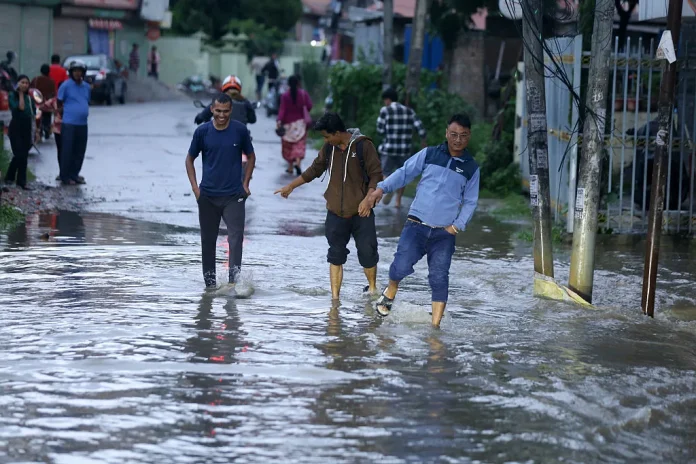KATHMANDU, July 8: A powerful deluge triggered by heavy rainfall in Tibet has led to catastrophic flooding along the Nepal-China border, leaving at least 29 people missing and causing massive infrastructure damage, officials confirmed on Tuesday.
The Bhote Koshi River, which flows through both Nepal and China, overflowed following torrential downpours in the Tibetan region. The resulting floodwaters swept away the iconic ‘Friendship Bridge’, a key trading route between the two nations.
In Nepal, the National Disaster Risk Reduction and Management Authority (NDRRMA) reported that 18 people are currently unaccounted for, including six Chinese workers and three Nepalese policemen. Eight electric vehicles were also washed away, and a small hydroelectric power station suffered damage.
The Chinese state-run Xinhua News Agency said 11 people were missing on the Chinese side of the border. The missing Chinese nationals in Nepal were working on the Inland Container Depot being constructed with Chinese aid in Rasuwa district, about 80 km north of Kathmandu.
“The river also swept away some containers carrying imported goods from China. There is a significant loss of property, and we are still collecting full details,” said Arjun Paudel, a senior Rasuwa district official.
The Nepal Army has so far rescued 11 people, and search and rescue operations are continuing, confirmed army spokesperson Raja Ram Basnet.
The floods come amid growing Chinese investment in Nepal across sectors such as transportation, energy, and healthcare. However, this tragic incident has underlined the vulnerability of cross-border infrastructure to climate-induced natural disasters.
Meanwhile, China has been grappling with widespread floods and flash floods in several regions, bracing for further impact from an approaching tropical storm.
In a related development, Pakistan has also been severely affected by recent monsoon-triggered disasters. According to the National Disaster Management Authority (NDMA), at least 79 people, including 38 children, have lost their lives since June 26 due to floods, landslides, and house collapses.
The NDMA has issued fresh alerts for flash floods and glacial lake outburst floods (GLOFs) in Gilgit-Baltistan and Khyber Pakhtunkhwa, warning of elevated risks due to rising temperatures and an incoming weather system. Notably, Chilas in Gilgit-Baltistan recorded the highest temperature in Pakistan’s history for the region at 48.5°C, surpassing the previous record of 47.7°C in 1997.

